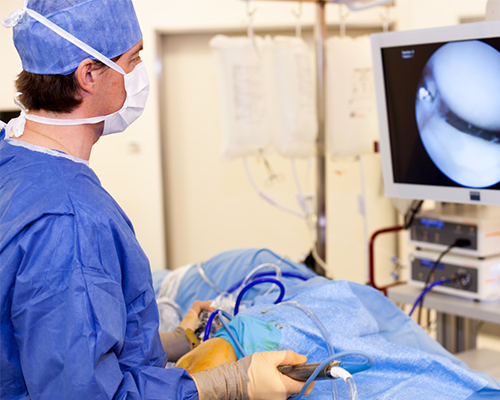Elbow arthroscopy FAQs answers from a specialist
Escrito por:Elbow arthroscopy is a minimally invasive technique, used by orthopaedic surgeons to look inside the joint. It’s used to diagnose and treat many different elbow joint conditions such as osteoarthritis, locked joints, tennis elbow, elbow stiffness, instability, cartilage injuries and more. Naturally, patients have questions about the procedure. Here are the answers to some of the most frequently asked questions.

1. Is elbow arthroscopy a serious operation?
Elbow arthroscopy is a real operation, with potential complications such as nerve injury. Elbow arthroscopy, therefore, is therefore best performed by an experienced surgery. We can do nearly everything we would do with a large open approach through minor incisions.
2. Are there advantages to elbow arthroscopy?
There are many advantages to elbow arthroscopy. For example, the surgeon can evaluate the entire joint through small “portals” and it is not necessary to cut any tendons or ligaments to get this excellent view. Therefore, the elbow will recover much faster in most circumstances.
3. How long does elbow arthroscopy take?
An elbow arthroscopy usually takes between 30 minutes to an hour.
4. Is anaesthetic used?
Elbow arthroscopy can be performed under general anaesthetic or local/regional anaesthetic. Most surgeons prefer general anaesthetic because it’s vital that the patient does not move during the procedure.
5. What are the risks of elbow arthroscopy?
Some complications are possible but less common when arthroscopy is performed:
- Infection
- Wound problems
- Stiffness
- Nerve injury
- Heterotopic ossification
- CRPS (complex regional pain syndrome)
The main risk of elbow arthroscopy is nerve injury. This is why it’s so important that the patient doesn’t move during surgery. If nerve injury occurs, the patient may never be able to move the hand or wrist normally.
It has been shown that the risk of injury decreases significantly with the surgeon’s level of experience. In experienced hands, elbow arthroscopy is a routine procedure.
6. What is the success rate of elbow arthroscopy?
This depends on the reason for the procedure. If the motivation for the procedure is correct and the surgeon is experienced in elbow arthroscopy, it is an extremely successful procedure. Nearly all patients will experience a clear benefit after surgery.
7. When can I shower after elbow arthroscopy?
The wounds need to stay dry and clean as long as the stitches are in, but they can easily be covered with a waterproof dressing a few days after surgery.
8. When can I drive after elbow arthroscopy?
Driving is not allowed on the day of surgery but is allowed as soon as the day after surgery (as long as the patient can perform emergency procedures, like a sudden swerve). Depending on the procedure, I usually tell my patients: “Driving is not dangerous to the elbow, but make sure you’re not dangerous to other people on the road”.
9. Will my elbow function as well as before surgery?
No, it should be better!
Discover how Professor Roger van Riet can help you – visit his profile.


